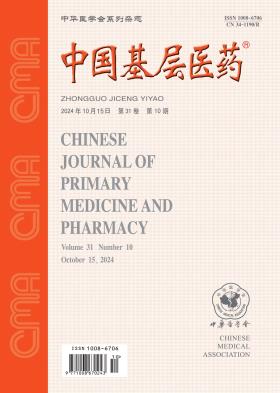高级别上皮内瘤变锥形切除术后手术切缘阳性和残余病变的危险因素分析
引用次数: 0
摘要
目的分析高级别上皮内瘤变锥形切除术后阳性切缘和残留病灶的危险因素,指导临床工作和随访。方法回顾性分析2013年11月至2018年11月在内蒙古自治区人民医院接受宫颈锥切术的180例Ⅱ、Ⅲ级宫颈上皮瘤变患者的临床资料。通过单因素和多因素回归分析,对与锥切术后残余切缘和再次手术(包括再次锥切和子宫切除术)相关的危险因素进行分析。结果锥形切除术后切缘阳性率为31.67%(57/180),其中再手术残余切缘为36.84%(21/57),更年期、接触性出血、癌症(原位癌、微浸润癌)是锥形切缘的阳性危险因素(OR=2.342、2.428、8.949),宫颈癌症(原位癌、微浸润癌)是锥形切除术后残留切缘的危险因素(OR=5.370,10.992)。其中,更年期也与切缘呈正相关,切缘是影响宫颈锥切缘和残余再手术的危险因素。临床上应高度重视。关键词:宫颈上皮内瘤变;Conization;重新操作;回归分析;风险因素本文章由计算机程序翻译,如有差异,请以英文原文为准。
Analysis of risk factors of positive surgical margin and residual lesions after cone resection of high-grade intraepithelial neoplasia
Objective
To analyze the risk factors of positive surgical margin and residual lesions after cone resection of high-grade intraepithelial neoplasia, and to guide clinical work and follow-up.
Methods
The clinical data of 180 patients with cervical epithelial neoplasia of grade Ⅱ and Ⅲ who underwent cervical conization in the People's Hospital of Inner Mongolia Autonomous Region from November 2013 to November 2018 were retrospectively analyzed.The risk factors associated with residual margin and reoperation (including re-cone and hysterectomy) after conization were performed by single factor and multivariate regression analysis.
Results
The incidence of positive resection margins after conization was 31.67%(57/180), which of the residual margin of re-surgery was 36.84%(21/57). Menopause, contact bleeding, cervical cancer(in situ carcinoma, microinvasive carcinoma) were positive risk factors for conical cutting margin (OR=2.342, 2.428, 8.949). Contact bleeding, cervical cancer(in situ carcinoma, microinvasive carcinoma) were risk factors for residual resection of the surgical margin after conization (OR=5.370, 10.992).
Conclusion
Contact bleeding, cervical carcinoma in situ, microinvasive carcinoma are closely related to cervical margin and lesion residual.Among them, menopause is also positively related to margin, which is a risk factor affecting cervical cone cutting margin and residual reoperation.It should be highly valued in clinical.
Key words:
Cervical intraepithelial neoplasia; Conization; Reoperation; Regression analysis; Risk factors
求助全文
通过发布文献求助,成功后即可免费获取论文全文。
去求助
来源期刊
CiteScore
0.10
自引率
0.00%
发文量
32251
期刊介绍:
Since its inception, the journal "Chinese Primary Medicine" has adhered to the development strategy of "based in China, serving the grassroots, and facing the world" as its publishing concept, reporting a large amount of the latest medical information at home and abroad, prospering the academic field of primary medicine, and is praised by readers as a medical encyclopedia that updates knowledge. It is a core journal in China's medical and health field, and its influence index (CI) ranks Q2 in China's academic journals in 2022. It was included in the American Chemical Abstracts in 2008, the World Health Organization Western Pacific Regional Medical Index (WPRIM) in 2009, and the Japan Science and Technology Agency Database (JST) and Scopus Database in 2018, and was included in the Wanfang Data-China Digital Journal Group and the China Academic Journal Comprehensive Evaluation Database.

 求助内容:
求助内容: 应助结果提醒方式:
应助结果提醒方式:


